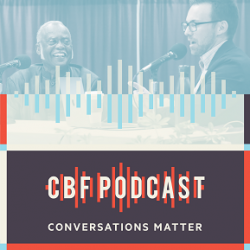By Terrell Carter

A regular conversation that I have with my grandfather, who has been in ministry for more than 40 years, is how much church life has changed since he accepted his call to ministry so many years ago. Ironically, when he was younger, he had the same kinds of conversations with his grandfather who was also in ministry. Although some of the challenges that my father, grandfathers and great-grandfather faced as ministers and pastors are similar to what I face, many of them are different.
One of the primary differences that separates how ministry is done across the generations is that during the 20th and 21st centuries people’s perceptions of church have changed. This change can be summed up in three realities churches regularly face.
First, for many, attending church is no longer a priority. The average attendance at churches throughout the U.S. is less than 100 people in each congregation on any given Sunday. This is not necessarily a bad thing on its own, but it is drastically different from when churches were bursting at the seams on a regular basis.
Second, those who are going to church are older. The average age for those attending is between the mid-50s and mid-60s. Having older attendees is not a bad thing either, but it indicates that congregations are missing out on engaging multiple generations of people.
Third, people are finding community, acceptance and spiritual outlets in other places. In the past, churches were the primary place where you found love, support and community. Some would say that due to the politicization of our faith and a lack of tangible compassion from certain segments of Christianity related to such subjects as diversity and equality, among other things, has pushed multiple generations away.
The consistent decrease in size of the majority of churches is just one sign of the decline of Christendom. Christendom was a time when the church and its leaders held extensive political and social influence on our culture — so much that a sizable number of our society operated from the standpoint that the church’s religious beliefs and desires were what was most important to our culture.
One of the pillars of Christendom was the process of building and maintaining visually appealing facilities and maintaining them. Essentially, if a beautiful building was built, you could expect people to come to see what it looked like. After people began to come, the focus became developing programs that would keep people coming back.
This led to the emergence of a class of professional clergy who were recognized and affirmed by professional institutions. An outgrowth of this trend was that, essentially, if you were not a professional clergy member, you would likely be relegated to the pews as an observer of the process of worshiping God.
The development of a professional class of clergy helped to facilitate the rise of a consumer mindset as it related to church life. With professional preachers, youth workers and children’s ministry leaders, people became comfortable with being a semi-active participant in service. People became comfortable with someone else mediating their relationship with God. It became easier to sit back and watch someone else do all the work.
Why am I writing about this? I believe that the lack of attendance most churches are facing shows that there are generations of people who have been “turned off” by the prevalence of these factors in church life. There are generations of people who have a genuine desire or calling to serve and want to be actively involved in the life of the church, but are disqualified because they are not professionally trained and they do not operate within the confines of Christendom.
Churches have the opportunity to be creative in incorporating new generations into their bodies and adapting their long held routines in order to be able to recognize and respond to new opportunities, to be creative in how we worship God, to be creative in where we worship God, to be creative in who helps to lead the worship of God.
We have the privilege of interacting with people in new ways that are relevant to the realities of changing mindsets, needs and desires. We have the opportunity to learn a new language that speaks in a meaningful way to a new generation of people.
Instead of simply building something in a vacuum and hoping that people will come, we have the opportunity to invite others to participate in the process of developing new initiatives that express the love and grace of our faith in meaningful ways. In being open to creative thinking, we just may build new relationships that honor existing ones and figure out ways to more consistently live out our belief in the priesthood of all believers.
Terrell Carter, D.Min., is Assistant Professor of Practical Theology and Director of Contextualized Learning at Central Seminary in Shawnee, Kan., and pastor of Webster Groves Baptist Church in Webster Groves, Mo.










